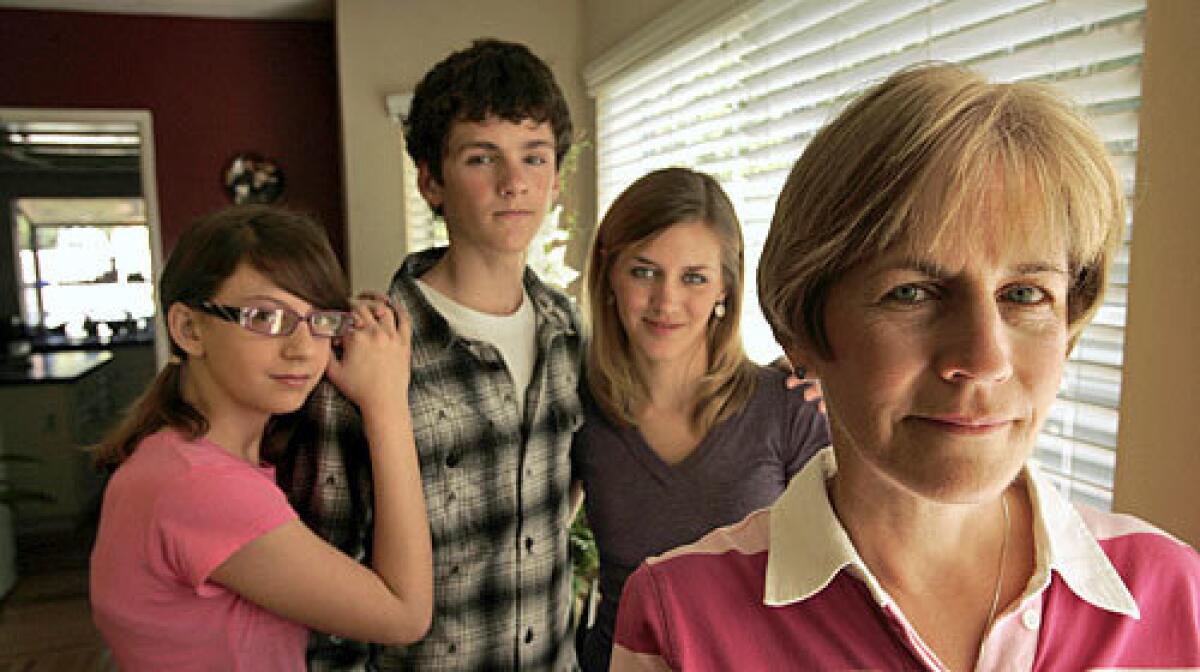Reports of negligence fuel pain after Metrolink crash

The recent drumbeat of news about the reckless behavior and questionable oversight of the Metrolink engineer suspected of causing last yearâs Chatsworth rail disaster has reverberated painfully for Claudia Souser.
She followed media reports as federal investigators publicly questioned rail officials over two days of hearings in Washington earlier this month.
âAs each disclosure came, you realized how much the safety of your family was compromised,â said the mother of three, who lost her husband of nearly 30 years -- and the familyâs breadwinner -- when Metrolink 111 collided with a freight train six months ago.
That sort of sentiment, coupled with disturbing details about Metrolink operations and the circumstances surrounding the crash, is spilling into the court battle over who should compensate victims like Souser and her children and how much they are due.
Legal experts say findings that Metrolink engineer Robert M. Sanchez sent and received hundreds of on-duty cellphone text messages, allowed teenage rail fans into locomotive cabs, and may have failed to properly call and confirm crucial signals are likely to bolster damage claims expected to total hundreds of millions of dollars. Metrolinkâs own abrupt decision last week to topple two top managers accused of failing to adequately supervise Sanchez and other rail workers underscored safety problems, experts said.
âWeâre getting admissions right and left,â said Georgene Vairo, a professor at Loyola Law School. âWhat the train engineer was doing appears to be grossly negligent.â
The question now, she said, is: âWhoâs going to take the fall . . . knowing that moneyâs going to get paid?â
Sanchez was text-messaging about the time he sailed through a red light and hit a Union Pacific freight train head-on, investigators have said. The engineer and 24 passengers were killed. More than 130 were injured and dozens hospitalized, some with serious internal damage.
Metrolink, a five-county, taxpayer-subsidized rail agency, and Connex Railroad, the private company hired to provide engineers and conductors on the commuter system, are suing each other. Each contends the other is required to pay its liability costs.
Recent disclosures could put both entities on the hook for losses that could reach -- or challenge and exceed -- a federal $200-million cap on compensation awards for rail accidents, according to liability law experts and victimsâ lawyers.
âAll this stuff is important,â said attorney Ed Pfiester, who represents relatives of three riders who died and 19 injured passengers. âThe more facts that come out about this egregious conduct . . . it makes it easier to show by clear and convincing evidence the lack of oversight of drivers.â
Some of the most powerful accusations have come from Metrolink itself. After Sanchezâs activities were detailed at the National Transportation Safety Board hearing in Washington, Metrolink removed two Connex employees from duties connected to Metrolink operations.
The removal of the managers was essential, Metrolink officials said. âI had zero confidence these people should be out there doing what needs to be done to prevent these things from happening,â said Metrolink board Chairman Keith Millhouse.
But Metrolinkâs own role in front-line personnel matters also was called into question. Connex, which defends its managers and insists that it has been diligent about safety, said Metrolink asked it to retain engineers and managers -- including the executives ordered removed last week -- when the firm took over train operations from Amtrak in 2005.
âMetrolink gave the Good Housekeeping seal of approval to all of these people,â said attorney Mark O. Hiepler, who represents Souser and 11 other crash victims and relatives.
The scope of potential liability wonât be known for months. More than 125 claims for damages have been filed with Metrolink, many without a dollar amount attached. At least seven lawsuits already have been filed. Victims now may be better positioned to argue for special punitive damages, said professor John Nockleby, director of Loyola Law Schoolâs Civil Justice Program. Federal investigative reports say that Sanchez sent and received about 350 text messages while on duty in the days before the crash. âThat seems to be reckless indifference to the safetyâ of passengers, Nockleby said.
Plaintiffs attorneys say they expect to challenge the $200-million liability cap, which Congress imposed to help keep passenger rail afloat.
Even if the cap holds, Metrolinkâs insurance coverage at the time of the accident was for a maximum of $150 million. If the agency is found fully liable for losses or has to cover judgments against Connex, it might have to come up with tens of millions of additional dollars, records and interviews show.
Facing rising insurance premiums and concluding that the chances of a catastrophic accident did not justify the extra cost, Metrolink trimmed its coverage from $200 million to $150 million several years ago, records show. After the Chatsworth crash, it boosted coverage back to $200 million, the federal cap level.
Connex, a fourth-tier subsidiary of a multibillion-dollar international behemoth, Veolia Environment, has not disclosed the amount of its insurance coverage.
More to Read
Sign up for Essential California
The most important California stories and recommendations in your inbox every morning.
You may occasionally receive promotional content from the Los Angeles Times.










